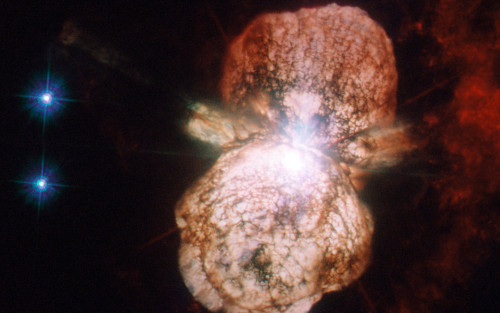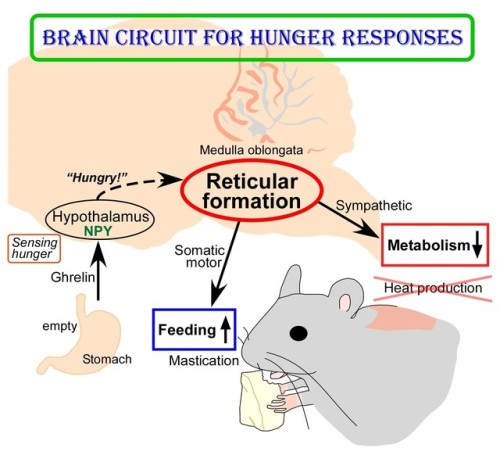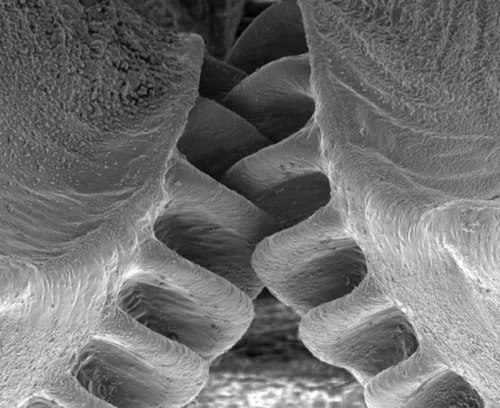ELI5:How Come People Can't Be Cryogenically Frozen Safely As The Ice Crystals Destroy The Cell Membranes,
ELI5:How come people can't be cryogenically frozen safely as the ice crystals destroy the cell membranes, but sex cells such as sperm are kept frozen for long periods of time yet remain functional?
I work in a lab where we freeze down cells all of the time. We freeze our cells in a medium that contains 5% DMSO, which among other things can be used as a cryoprotectant. However, DMSO is also toxic to cells at the concentrations necessary for cryoprotection. Consequently, when you freeze cells in DMSO, you add the DMSO medium at ice-cold temperatures and don’t allow the cells to warm up. When you later thaw the cells, you have to dilute out the DMSO as quickly as possible without causing osmotic shock, which can pop the cells. Such restrictions on freezing and thawing would basically be impossible to control at the level of a complete organism.
However, to contradict a lot of previous posts, individual cells can be recovered from freezing with high viability. When performed properly (and this varies quite a bit by cell type), you can expect >90% of cells to be alive following thaw.
The chemicals that allow cells to survive freezing are toxic to the body. Keeping the cells cold minimized the damage that this chemical does to the cells. With single cell solutions, adding the chemical at ice-cold temperatures and immediately diluting it out when you thaw the cells can keep 90% of the cells alive. There’s no way to do this with an intact body.
It’s also worth noting that this is probably not the only reason that this technique doesn’t scale to organisms.
Explain Like I`m Five: good questions, best answers.
More Posts from Science-is-magical and Others
Ok, so I don’t know how I ended up here and woah!
they made

characters

for

every

single

element

of the

periodic

table!

And also they made this

and this

*new ship*
There’s even a granny!

It’s like

superheros

(there’s a guy who looks like Hulk btw)

and humans

and there are

twins!!

And Bethoveen

THEY MADE THOR

And there’s also this which made me laugh

I can’t!

(source)
A reminder that NASA isn’t the only space agency
I have seen many “Space achievements 2015” articles and posts leaving international accomplisments completely out, so here are some of them:
1. A new type of basaltic rock on the moon was found by Chinese robotic lander.
China National Space Administration’s Chang’e-3 landed on the Moon on 14 December 2013, becoming the first spacecraft to soft-land since the Soviet Union‘s Luna 24 in 1976.

2. On February 11, the European Space Agency, ESA, successfully launched on a suborbital trajectory and recovered an experimental wingless glider, IXV.
It became the first true “lifting body” vehicle, which reached a near-orbital speed and then returned back to Earth without any help from wings.

3. On December 9, Japan’s Akatsuki spacecraft succeeded entering orbit of Venus.
Japan Aerospace eXploration Agency’s Akatsuki is the first spacecraft to explore Venus since the ESA’s Venus Express reached the end of its mission in 2014.

4. ESA’s Rosetta spacecraft detected oxygen ‘leaking’ from comet 67P/Churyumov-Gerasimenko, the first time these molecules have been seen around a comet.
Rosetta spacecraft, the first to drop a lander (named Philae) on a comet, entered orbit around 67P in 2014 and continues to orbit the body. On June 13, European Space Operations Centre in Darmstadt, Germany, received signals from the Philae lander after months of silence.

5. The Canadian Space Agency has provided NASA with a laser mapping system that will scan an asteroid that could potentially hit the Earth in about 200 years

6. The high-resolution stereo camera on ESA’s Mars Express captured this sweeping view from the planet’s south polar ice cap and across its cratered highlands and beyond.

find Sci-Universe on Tumblr, Instagram & Facebook

Birds developed the unique vocal organ that enables them to sing more than 66 million years ago when dinosaurs walked the Earth, a new fossil discovery has shown.
But the earliest syrinx, an arrangement of vibrating cartilage rings at the base of the windpipe, was still a long way from producing the lilting notes of a song thrush or blackbird.
Scientists believe the extinct duck and goose relative that possessed the organ was only capable of making honking noises.
The bird, Vegavis iaai, lived during the Cretaceous era. Although its fossil bones were unearthed from Vega Island in Antarctica in 1992, it was not until three years ago that experts spotted the syrinx.
All birds living today are descended from a particular family of dinosaurs that developed feathers and the ability to fly.
The new discovery suggests the syrinx is another hallmark of birds that was absent from non-avian dinosaurs…

Oh hey, not a big deal, but the hubble took a picture of a star that’s nearing supernova status

(Image caption: The empty stomach releases the hormone called ghrelin. By receiving ghrelin, the hypothalamus in the brain senses hunger and produces “hunger signaling” through the action of neuropeptide Y (NPY). The hunger signaling activates neurons in the reticular formation of the medulla oblongata, which then inhibit sympathetic output to reduce metabolic heat production and simultaneously provide masticatory motor rhythm to facilitate feeding. Credit: © 2017 Yoshiko Nakamura)
New Insights into Brain Circuit for Hunger Responses during Starvation
The human body responds to starving conditions, such as famine, to promote the chance of survival. It reduces energy expenditure by stopping heat production and promotes feeding behavior. These “hunger responses” are activated by the feeling of hunger in the stomach and are controlled by neuropeptide Y (NPY) signals released by neurons in the hypothalamus. However, how NPY signaling in the hypothalamus elicits the hunger responses has remained unknown.
Sympathetic motor neurons in the medulla oblongata are responsible for heat production by brown adipose tissue (BAT). Researchers centered at Nagoya University have now tested whether the heat-producing neurons respond to the same hypothalamic NPY signals that control hunger responses. They injected NPY into the hypothalamus of rats and tested the effect on heat production. Under normal conditions, blocking inhibitory GABAergic receptors or stimulating excitatory glutamatergic receptors in the sympathetic motor neurons induced heat production in BAT. After NPY injection, stimulating glutamatergic receptors did not produce heat, but inhibiting GABAergic receptors did. The study was reported in Cell Metabolism.
“This indicated that hypothalamic NPY signals prevent BAT thermogenesis by using inhibitory GABAergic inputs to sympathetic motor neurons,” study lead author Yoshiko Nakamura says.
Retrograde and anterograde tracing with fluorescent dyes revealed which brain region provided the inhibitory GABAergic inputs to heat-producing motor neurons.
“Tracing experiments showed that sympathetic motor neurons are directly innervated by GABAergic inputs from reticular nuclei in the medulla oblongata,” corresponding author Kazuhiro Nakamura explains, “selective activation of these GABAergic reticular neurons inhibits BAT thermogenesis.”
The researchers’ further findings showed that GABAergic inputs from medullary reticular neurons are involved in hypothalamic NPY-mediated inhibition of heat production in BAT. This hunger response circuit probably explains why anorexic individuals suffer from hypothermia.
Interestingly, stimulation of these medullary reticular neurons prompted rats to begin chewing and feeding. This effect was similar to injecting NPY into the hypothalamus, suggesting that hypothalamic NPY signaling activates reticular neurons in the medulla oblongata to promote feeding and mastication during the hunger response.
Abnormal activation of these neurons under non-starved conditions may contribute to obesity. Understanding these mechanisms could lead to development of more effective treatments for obesity.


Close-Up of the First Mechanical Gear Ever Found in Nature
The biological form of a mechanical gear was observed in nature for the first time in juvenile planthoppers (Genus: Issus), a common insect that can be found in gardens across Europe.
The insect has hind-leg joints with curved cog-like strips of opposing ‘teeth’ that intermesh, rotating like mechanical gears to synchronize the animal’s legs when it launches into a jump. The finding demonstrates that gear mechanisms previously thought to be solely man-made have an evolutionary precedent.
(Continue Reading)
-
 sehkmetdestroyerofworlds reblogged this · 5 years ago
sehkmetdestroyerofworlds reblogged this · 5 years ago -
 sehkmetdestroyerofworlds liked this · 5 years ago
sehkmetdestroyerofworlds liked this · 5 years ago -
 velociheroviridi liked this · 5 years ago
velociheroviridi liked this · 5 years ago -
 stepsofaman liked this · 5 years ago
stepsofaman liked this · 5 years ago -
 whos-that-ghostie reblogged this · 5 years ago
whos-that-ghostie reblogged this · 5 years ago -
 whos-that-ghostie liked this · 5 years ago
whos-that-ghostie liked this · 5 years ago -
 ashuri-terako liked this · 6 years ago
ashuri-terako liked this · 6 years ago -
 jjandjim liked this · 6 years ago
jjandjim liked this · 6 years ago -
 fluffyteta liked this · 6 years ago
fluffyteta liked this · 6 years ago -
 dreaming-for-meaning liked this · 6 years ago
dreaming-for-meaning liked this · 6 years ago -
 aethernalstars liked this · 6 years ago
aethernalstars liked this · 6 years ago -
 booklovertwilight liked this · 6 years ago
booklovertwilight liked this · 6 years ago -
 tearsformadoka liked this · 6 years ago
tearsformadoka liked this · 6 years ago -
 mechanical-taco reblogged this · 6 years ago
mechanical-taco reblogged this · 6 years ago -
 megsy001 liked this · 6 years ago
megsy001 liked this · 6 years ago -
 lilbabygoose liked this · 6 years ago
lilbabygoose liked this · 6 years ago -
 furrywolfpup liked this · 6 years ago
furrywolfpup liked this · 6 years ago -
 ehchris466 liked this · 6 years ago
ehchris466 liked this · 6 years ago -
 science-is-magical reblogged this · 7 years ago
science-is-magical reblogged this · 7 years ago -
 eleutherh liked this · 7 years ago
eleutherh liked this · 7 years ago -
 rinofwater liked this · 7 years ago
rinofwater liked this · 7 years ago -
 crybaby-kaga liked this · 7 years ago
crybaby-kaga liked this · 7 years ago -
 scrapbookofinspirations liked this · 7 years ago
scrapbookofinspirations liked this · 7 years ago -
 2manyzoombinis2count liked this · 7 years ago
2manyzoombinis2count liked this · 7 years ago -
 parkitaar liked this · 7 years ago
parkitaar liked this · 7 years ago -
 muggle-the-hat liked this · 7 years ago
muggle-the-hat liked this · 7 years ago -
 fadekhat-blog liked this · 7 years ago
fadekhat-blog liked this · 7 years ago -
 rabiosofish liked this · 7 years ago
rabiosofish liked this · 7 years ago -
 daneclash reblogged this · 7 years ago
daneclash reblogged this · 7 years ago -
 daneclash liked this · 7 years ago
daneclash liked this · 7 years ago -
 no-mere-mortals liked this · 7 years ago
no-mere-mortals liked this · 7 years ago -
 bunnypoof92 liked this · 7 years ago
bunnypoof92 liked this · 7 years ago -
 studigoals liked this · 7 years ago
studigoals liked this · 7 years ago -
 flytehwire liked this · 8 years ago
flytehwire liked this · 8 years ago -
 radlizzard reblogged this · 8 years ago
radlizzard reblogged this · 8 years ago -
 holiestvamp liked this · 8 years ago
holiestvamp liked this · 8 years ago -
 mr-risse liked this · 8 years ago
mr-risse liked this · 8 years ago -
 ddlilee liked this · 8 years ago
ddlilee liked this · 8 years ago -
 upwardsspiral liked this · 8 years ago
upwardsspiral liked this · 8 years ago -
 lilietsblog liked this · 8 years ago
lilietsblog liked this · 8 years ago -
 temporary-humanoid liked this · 8 years ago
temporary-humanoid liked this · 8 years ago




















